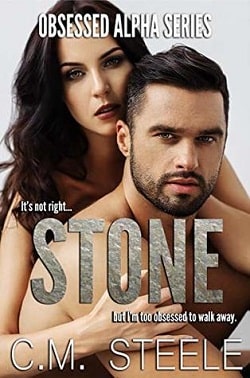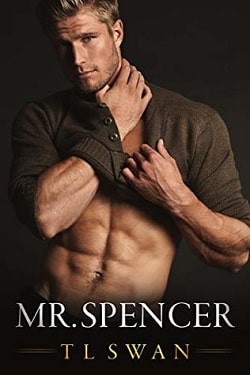“What’s the worst that would happen, Jim? They’d fire me, thus denying me sublime moments such as this?” he said, gesturing around the basement. Then he looked back at Byrth. “Remember what Eisenhower said at that Nazi death camp at the end of World War Two, when he was supreme commander of Allied forces?”
Byrth nodded. “Indeed I do. ‘Get it all on record now—get the films, the witnesses—because somewhere down the road of history some bastard will get up and say that this never happened.’ To this day those images are hard to look at.”
“And,” Payne said, “no one would believe that this is happening now. That, however, is about to change.”
Payne hit another speed-dial key and after a moment said, “Kerry, are you picking up my location from this phone?” He paused to listen, then said, “Right. That’s it. We were at the Hazzard address. I need you to send a Crime Scene unit here. I’ll call you back.” He broke off the call and speed-dialed another. “Dr. Mitchell, Matt Payne. You too busy to break away . . . ?”
—
“We’re talking with Philadelphia’s chief medical examiner, Dr. Howard Mitchell,” Mickey O’Hara said, panning the broadcast-quality high-definition digital video camera around the basement of the row house, the lens tracking across the wall with the elaborate four-foot-tall “El Pozolero” graffiti.
He stopped when he had in view the balding, rumpled doctor in the well-worn two-piece suit. The medical examiner stood to the right of the giant orange drum, which towered over him.
“Dr. Mitchell,” O’Hara said, holding a microphone in front of him, “you were calling this process alkaline hydrolysis?”
“That’s correct,” Mitchell began, then stopped as he furrowed his brow. “This is not for public broadcast or any other publication, correct?”
“Not for broadcast, Dr. Mitchell,” Matt Payne confirmed. He was standing behind O’Hara. “Just for documentation purposes.”
Mitchell, looking beyond the camera, nodded and said, “Okay, Matt, I take you at your word. I damn sure don’t want to see myself in those fifteen-minute TV news loops, over and over discussing such an indelicate topic. And that’s what would happen, because I’m too old to try to be politically correct.”
He then looked back into the lens and went on: “The university’s medical school has what is called the Tomb—a large stainless steel cylinder that is about the size, not surprisingly when you consider it, of a human coffin. When bodies are signed over by the families of the deceased and these bodies meet the needs of the medical school, they’re used for teaching gross anatomy, et cetera. Afterward the carved-up cadavers are taken to the Tomb.”
“And how does the Tomb work?” O’Hara said.
“The cadaver is placed in a lye solution in the cylinder, which then is sealed and heated to three hundred degrees Fahrenheit under a pressure of sixty pounds per square inch. In about three hours the alkaline hydrolysis turns the cadaver into a liquid that’s about the color and thickness of motor engine oil. It is an inexpensive and efficient process.”
“But is it safe?”
“Of course. Completely. Safer, in fact, than the embalming fluids that get washed down drains. There is only a bit of bone shadow left ov
er.”
“Bone shadow is what?”
“Calcium phosphate. It’s what makes up most of our bone and teeth mass. This can then simply be ground to a harmless fine powder and disposed of.”
Dr. Mitchell motioned with his hand at the enormous drum.
“And this is essentially the same process—the use of lye and heat. Clearly, the drum here is much more crude than the pressurized Tomb. And considerably less efficient. But lye is cheap and readily available for soap making, biodiesel manufacture, and many other general uses. Any farm supply house in Amish country will sell it to you, or you can order it on the Internet. I would estimate that two hundred dollars’ worth could easily cook four or five bodies. Just add water. And boil.”
—
After O’Hara recorded Dr. Mitchell releasing the row house to the Crime Scene Unit—video that the medical examiner said O’Hara did have permission to use on Philly News Now—he followed Mitchell out the door.
Jim Byrth now watched the Crime Scene blue shirts photographing the large room with its clear plastic tent and small forest of ready-to-harvest marijuana plants. He had his handcuffs in his right hand, having gone back and retrieved them from the Jamaican after confiscating his knife and throwing it in the nearby dumpster. Byrth and Payne had agreed they had more pressing problems and that the stoner had had enough justice served for one day.
“That Rastafarian would’ve pissed his pants over this hydro,” Byrth now said. “It’s maybe four, five times as potent as average Mexican pot. Which is why it goes for a premium. A pound of average weed runs around four hundred bucks. That puts hydroponic at four grand, at least.”
“This room is worth a fortune.”
“Was . . .”
After a long moment, Payne said, “Have you ever seen an operation like this, Jim?”
Byrth turned to him.
“Well,” he said, “I have seen acre after acre of pot fields. And I have seen grow houses in everything from Houston condos to suburban Fort Worth ranch homes. And, I’m sorry to say, to my grave I will take the memory of seeing the horror in the barrels of Pozole. But all this?” He slowly shook his head. “I have never seen anything close to this place. And pray I never do again.”















